Abstract
When offered a choice (Choice Y) between a small immediate reward (2-sec exposure to grain) and a large reward (4-sec exposure to grain) delayed by 4 sec, pigeons invariably preferred the small, immediate reward. However, when offered a choice (Choice X) between a delay of T seconds followed by Choice Y and a delay of T seconds followed by restriction to the large delayed reward only, the pigeon's choice depended on T. When T was small, the pigeons chose the alternative leading to Choice Y (and then chose the small, immediate reward). When T was large, the pigeons chose the alternative leading to the large delayed reward only. The reversal of preference as T increases is predicted by several recent models for choice between various amounts and delays of reward. The preference for the large delayed alternative with long durations of T parallels everyday instances of advance commitment to a given course of action. Such commitment may be seen as a prototype for self-control.
Full text
PDF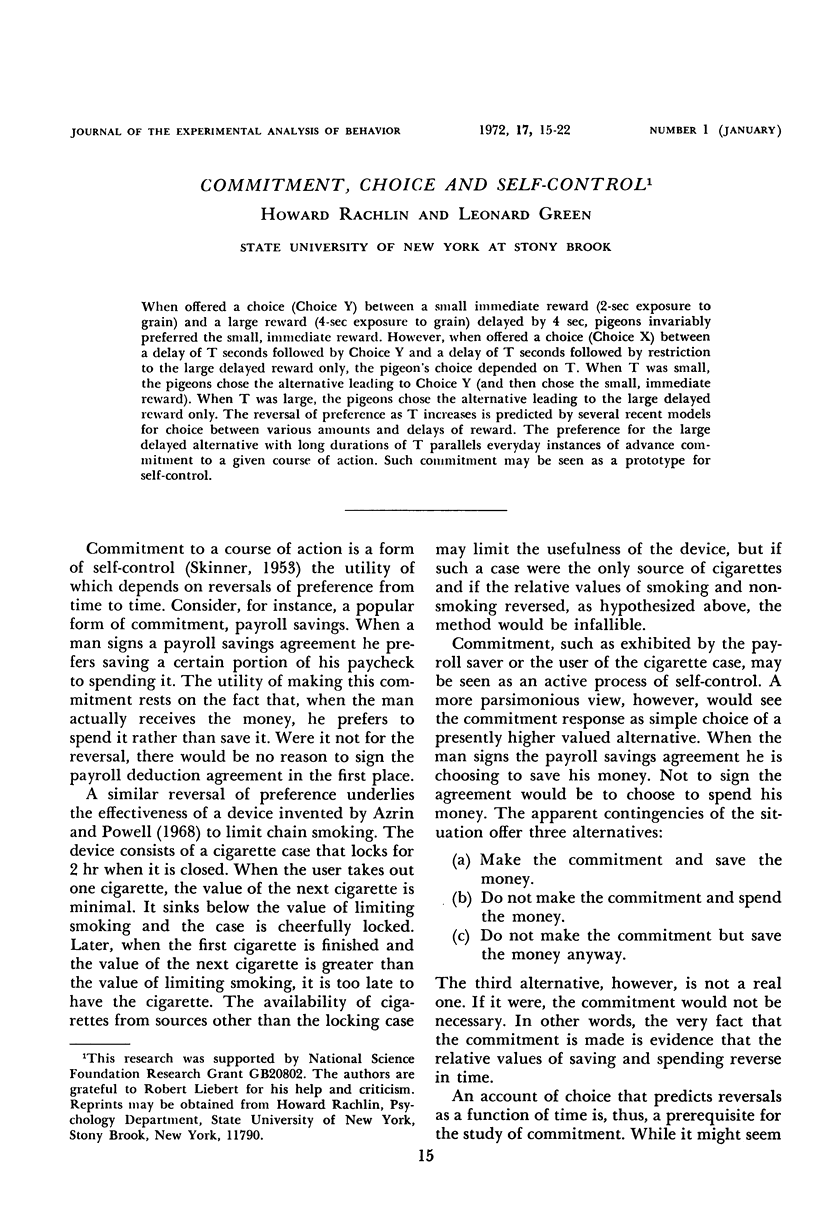
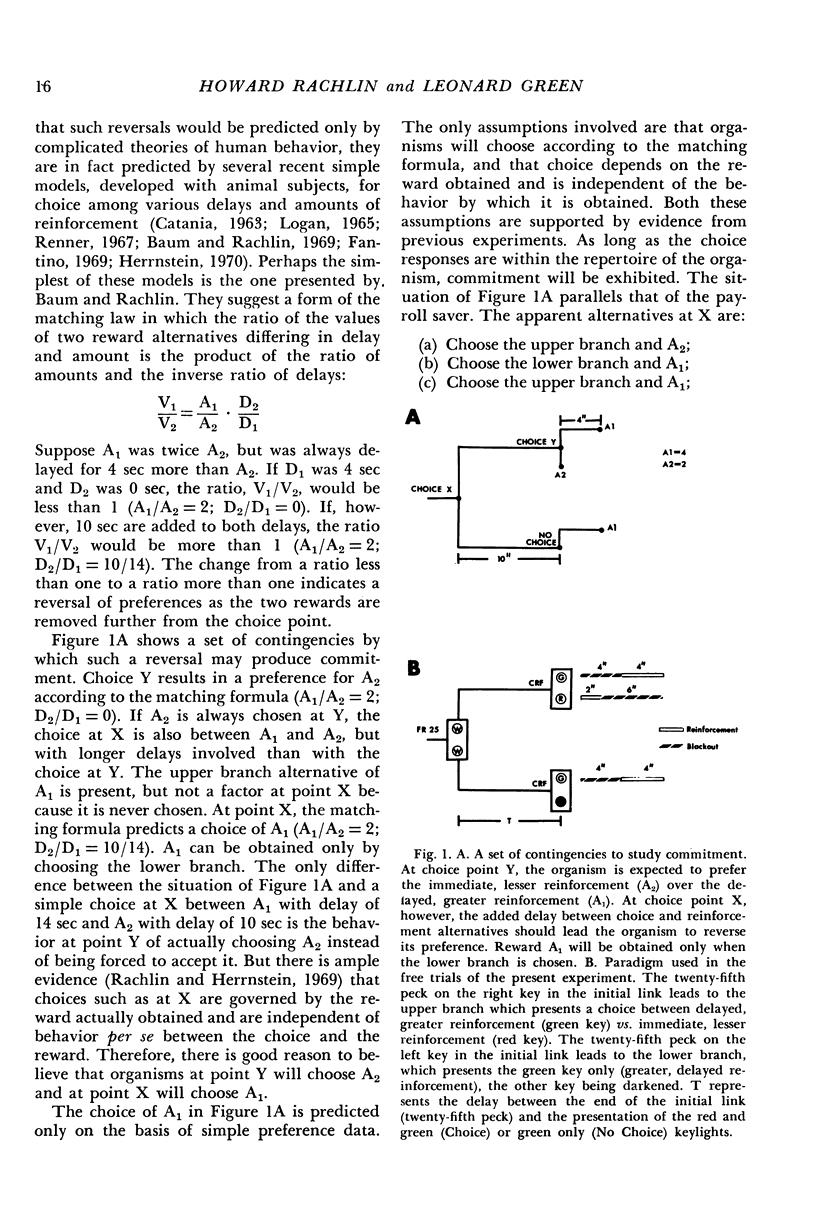
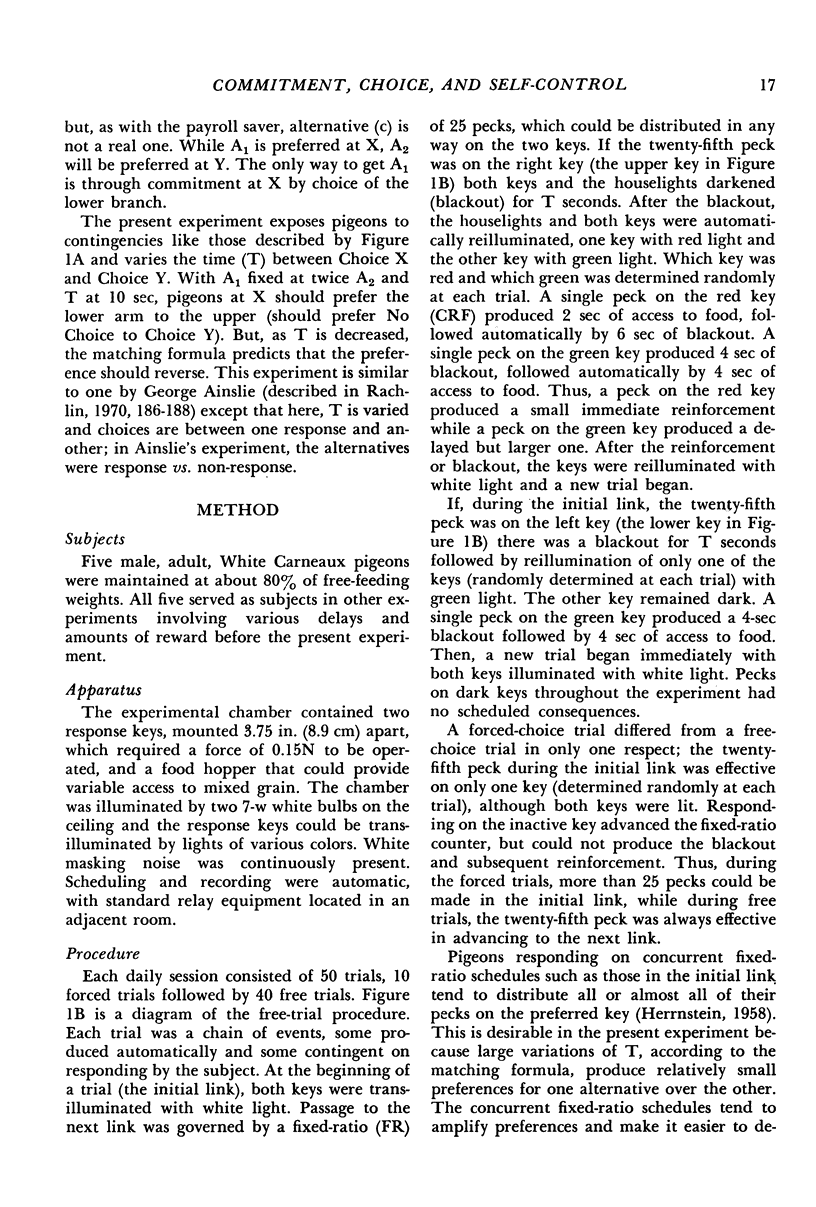
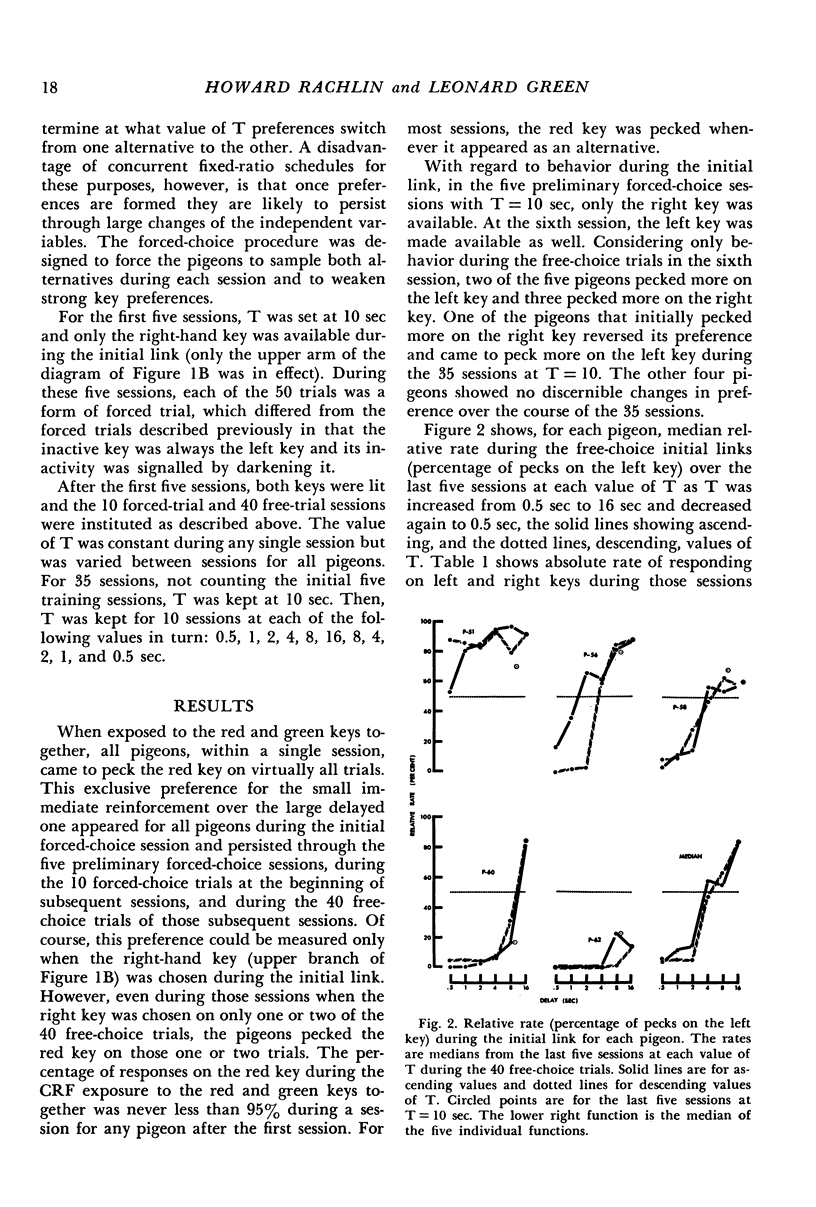
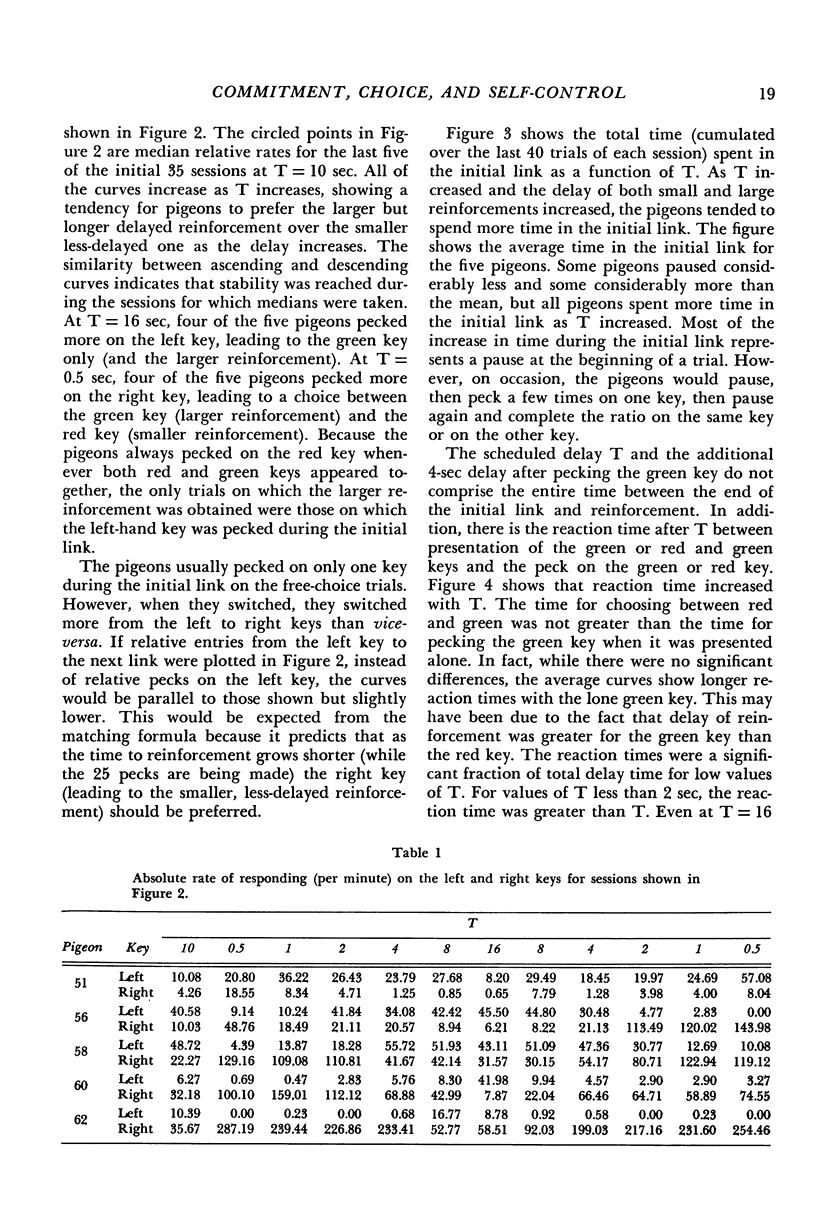
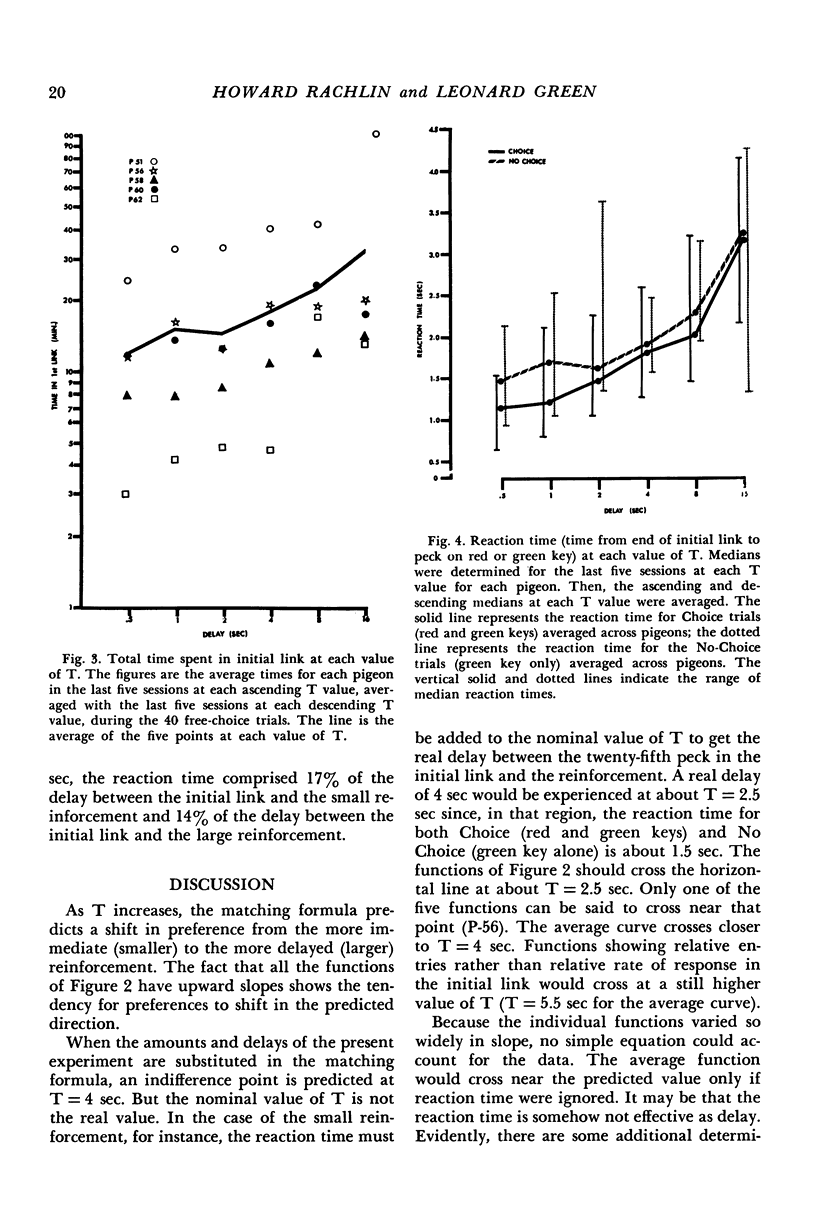
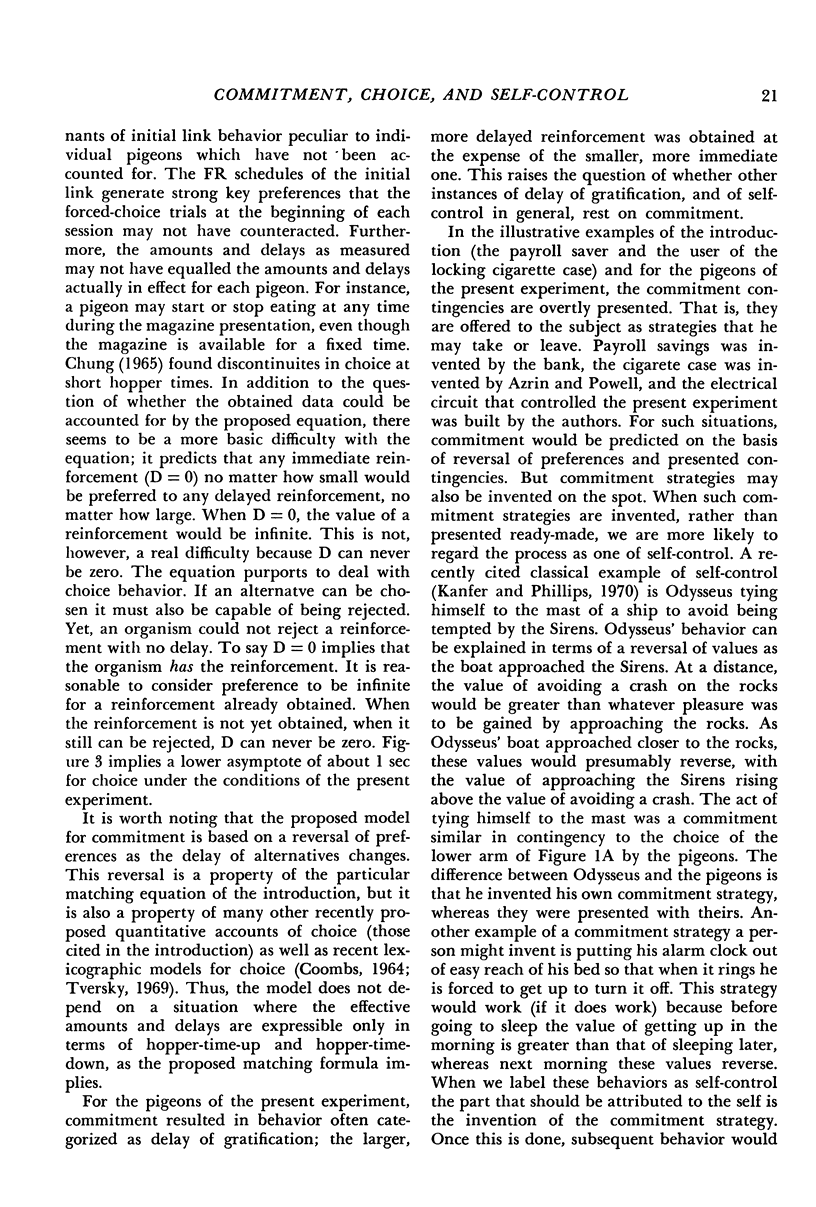
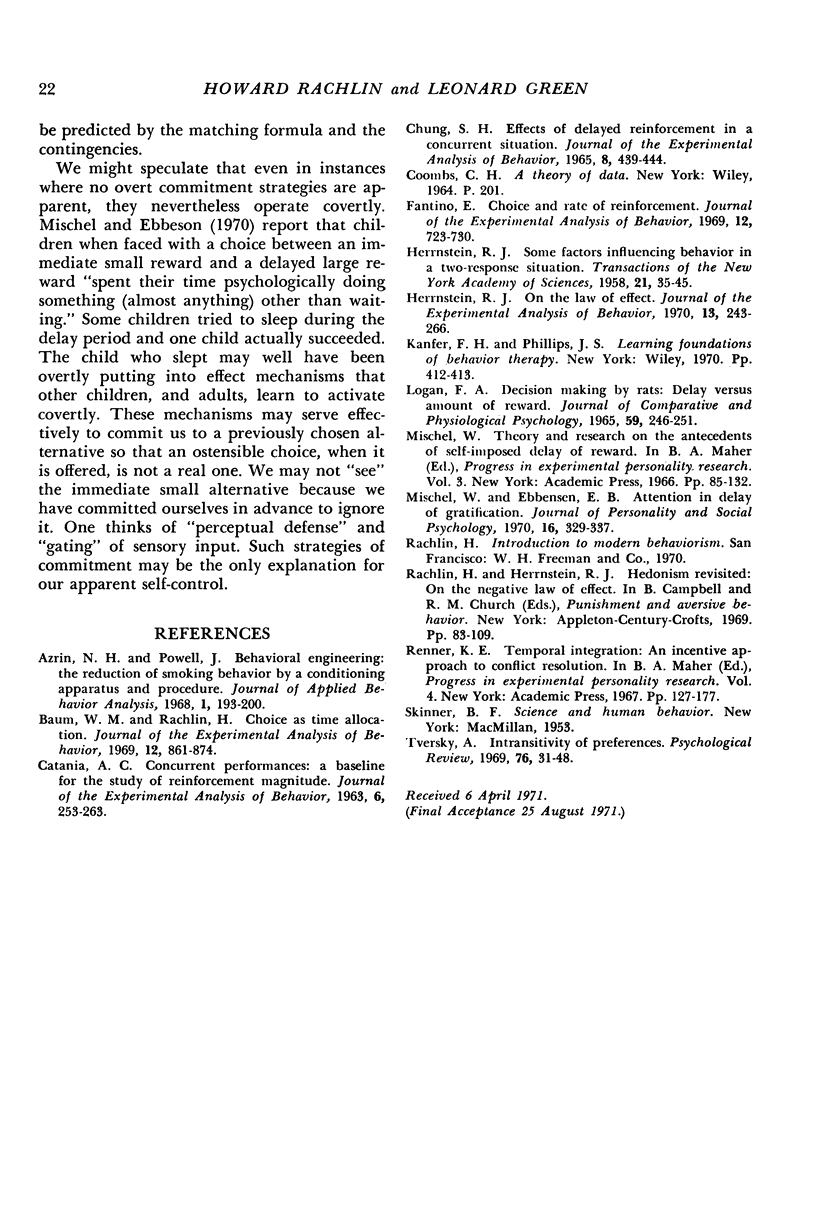
Selected References
These references are in PubMed. This may not be the complete list of references from this article.
- Azrin N. H., Powell J. Behavioral engineering: the reduction of smoking behavior by a conditioning apparatus and procedure. J Appl Behav Anal. 1968 Fall;1(3):193–200. doi: 10.1901/jaba.1968.1-193. [DOI] [PMC free article] [PubMed] [Google Scholar]
- Baum W. M., Rachlin H. C. Choice as time allocation. J Exp Anal Behav. 1969 Nov;12(6):861–874. doi: 10.1901/jeab.1969.12-861. [DOI] [PMC free article] [PubMed] [Google Scholar]
- CATANIA A. C. Concurrent performances: reinforcement interaction and response independence. J Exp Anal Behav. 1963 Apr;6:253–263. doi: 10.1901/jeab.1963.6-253. [DOI] [PMC free article] [PubMed] [Google Scholar]
- Chung S. H. Effects of delayed reinforcement in a concurrent situation. J Exp Anal Behav. 1965 Nov;8(6):439–444. doi: 10.1901/jeab.1965.8-439. [DOI] [PMC free article] [PubMed] [Google Scholar]
- Fantino E. Choice and rate of reinforcement. J Exp Anal Behav. 1969 Sep;12(5):723–730. doi: 10.1901/jeab.1969.12-723. [DOI] [PMC free article] [PubMed] [Google Scholar]
- Herrnstein R. J. On the law of effect. J Exp Anal Behav. 1970 Mar;13(2):243–266. doi: 10.1901/jeab.1970.13-243. [DOI] [PMC free article] [PubMed] [Google Scholar]
- Mischel W. Theory and research on the antecedents of self-imposed delay of reward. Prog Exp Pers Res. 1966;3:85–132. [PubMed] [Google Scholar]
- Renner K. E. Temporal integration: an incentive approach to conflict resolution. Prog Exp Pers Res. 1967;4:127–177. [PubMed] [Google Scholar]


